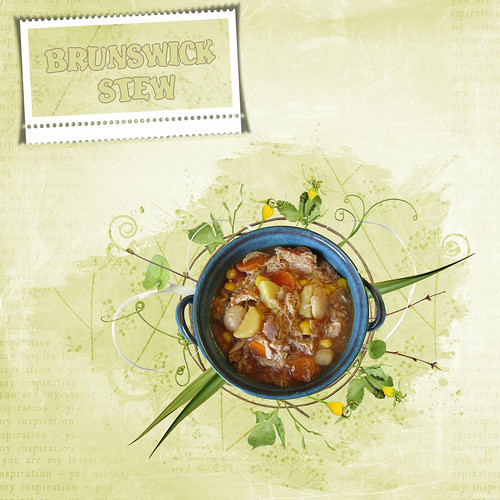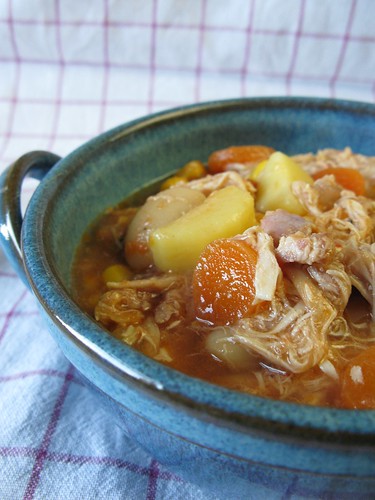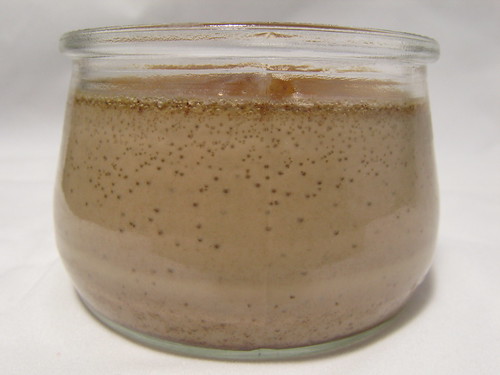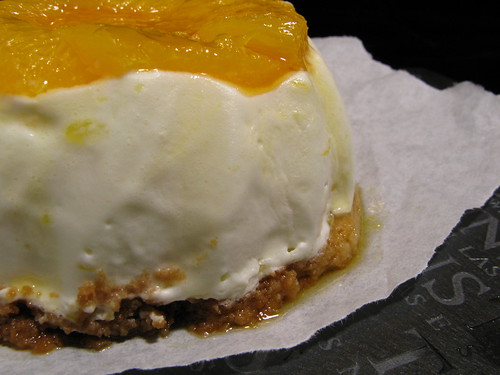This time I'm really late. Too late to be precise. For the first time - but not because of my usual late-posting-issues. In fact, I had everthing ready in my drawer one week earlier. Then my internet connection was cut off and it took a whole week to get it fixed -until today. Well, I was getting really bad withdrawal symptoms as I couldn't read all my favourite foodblogs - I really missed the food blogging world out there...
The 2010 April Daring Cooks challenge was hosted by Wolf of Wolf's Den. She chose to challenge Daring Cooks to make Brunswick Stew. Wolf chose recipes for her challenge from The Lee Bros. Southern Cookbook by Matt Lee and Ted Lee, and from the Callaway, Virginia Ruritan Club.
Brunswick Stew has a long, and oft debated history. Brunswick, Georgia claimed that the first Brunswick Stew was created there in 1898. There is, at the Golden Isles Welcome Center on Interstate 95, a bronzed stew pot with a plaque proclaiming this fact. However, Brunswick, Virginia claims that the first Brunswick Stew was created there by a camp cook named Jimmy Matthews in 1828, for a hunting expedition led by Dr. Creed Haskings, a member of the Virginia State Legislature for a number of years. He was said to have used squirrel in the original Brunswick Stew created for the group when they returned. The hunters were at first skeptical of the thick, hearty concoction, but upon tasting it, were convinced and asked for more. In the early 20th Cent, the rivalry of the two Brunswicks helped make this dish as popular as it is today, and it quickly became a pan-Southern classic. Some recipe call for the original addition of squirrel, but most allow for chicken, turkey, ham, or pork, even beef on occasion. Rabbit is also used. The vegetables can vary widely from variation to variation, however, the Brunswick Stewmasters recipe says *exactly* what is used in competion stews, and states that "Adding any additional ingredient(s) will disqualify the stew from being an original Brunswick Stew."
We could choose between a short and a long version, and I wanted to be really daring and chose the long one. Another reason was that I have made stews before, and the ones you use boned meat tastes a lot better. Also I discover quite an interest in using rabbit meat for cooking. I had no problems with buying it and even found fresh one (thanks to the Easter holidays where Germans love to eat rabbit for obvious reasons). Normally I have to buy frozen meat made in China ... I cooked the stew on two consecutive days and halved all the ingredients - I had five large portions at the end from which three ended up in the freezer for the days I'm not a home and Robert is alone and hungry ;)
Brunswick Stew - the -Long Way- recipe
from "The Lee Bros. Southern Cookbook: Stories and Recipes for Southerners and Would-Be Southerners" by Matt Lee and Ted Lee
serves about 12
- 115 g slab bacon, rough diced
- 2 Serrano, Thai or other dried red chiles, stems trimmed, sliced, seeded, flattened
- 450 rabbit, quartered, skinned
- 1800 g chicken, quartered, skinned, and most of the fat removed
- 1 tablespoon sea salt for seasoning, plus extra to taste
- 2-2,5 l chicken broth
- 2 bay leaves
- 2 large celery stalks
- 900 g potatoes (waxy type) , peeled, rough diced
- 340 g carrots (about 5 small carrots), chopped
- about 4 medium onions, chopped
- 450 g fresh corn kernels
- 680 g butterbeans, preferably fresh
- 990 g whole, peeled tomatoes, drained
- 57 g red wine vinegar
- juice of 2 lemons
- Tabasco sauce to taste
In the largest stockpot you have, fry the bacon over medium-high heat until it just starts to crisp. Transfer to a large bowl, and set aside. Reserve most of the bacon fat in your pan, and with the pan on the burner, add in the chiles. Toast the chiles until they just start to smell good, or make your nose tingle, about a minute tops. Remove to bowl with the bacon.
Season liberally both sides of the rabbit and chicken pieces with sea salt and pepper. Place the rabbit pieces in the pot and sear off all sides possible. You just want to brown them, not cook them completely. Remove to bowl with bacon and chiles, add more bacon fat if needed, or olive oil, or other oil of your choice, then add in chicken pieces, again, browning all sides nicely. Remember not to crowd your pieces, especially if you have a narrow bottomed pot. Put the chicken in the bowl with the bacon, chiles and rabbit. Set it aside.
Add 2 cups of your chicken broth or stock, if you prefer, to the pan and basically deglaze the4 pan, making sure to get all the goodness cooked onto the bottom. The stock will become a nice rich dark color and start smelling good. Bring it up to a boil and let it boil away until reduced by at least half. Add your remaining stock, the bay leaves, celery, potatoes, chicken, rabbit, bacon, chiles and any liquid that may have gathered at the bottom of the bowl they were resting in. Bring the pot back up to a low boil/high simmer, over medium/high heat. Reduce heat to low and cover, remember to stir every 15 minutes, give or take, to thoroughly meld the flavors. Simmer, on low, for approximately 1 ½ hours. Supposedly, the stock may become a yellow tinge with pieces of chicken or rabbit floating up, the celery will be very limp, as will the chiles. Taste the stock, according to the recipe, it "should taste like the best chicken soup you've ever had".
- Here I stopped the first evening and put the pot into the refridgerator. The next day I had meat pieces enclosed into a delicious smelling jelly-like mass. At this point, I could have eaten it right away - cold - onto a fresh toasted bread. Some days later I repeated the steps above with without the rabbit, discarded the celery and added some noodles. It was the best chicken soup I had so far. -
With a pair of tongs, remove the chicken and rabbit pieces to a colander over the bowl you used earlier. Be careful, as by this time, the meats will be very tender and may start falling apart. Remove the bay leaf, celery, chiles, bacon and discard (or don't - I didn't 'waste' the bacon and celery and kept it). After you've allowed the meat to cool enough to handle, carefully remove all the meat from the bones, shredding it as you go. Return the meat to the pot, throwing away the bones. Add in your carrots, and stir gently, allowing it to come back to a slow simmer. Simmer gently, uncovered, for at least 25 minutes, or until the carrots have started to soften.
Add in your onion, butterbeans, corn and tomatoes. As you add the tomatoes, crush them up, be careful not to pull a me, and squirt juice straight up into the air, requiring cleaning of the entire stove. Simmer for another 30 minutes, stirring every so often until the stew has reduced slightly, and onions, corn and butterbeans are tender. Remove from heat and add in vinegar, lemon juice, stir to blend in well. Season to taste with sea salt, pepper, and Tabasco sauce if desired.
You can either serve immediately or refrigerate for 24 hours, which makes the flavors meld more and makes the overall stew even better. Serve hot, either on its own, or with a side of corn bread, over steamed white rice, with any braised greens as a side.

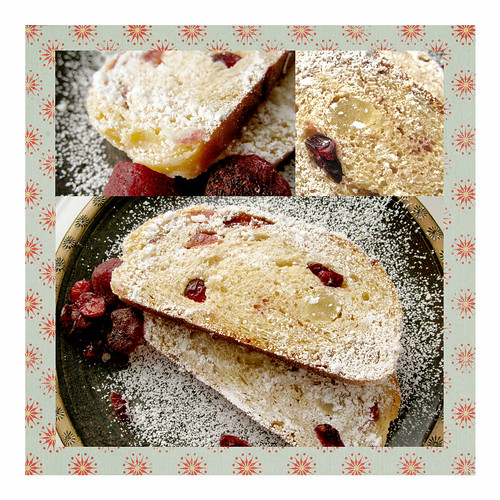

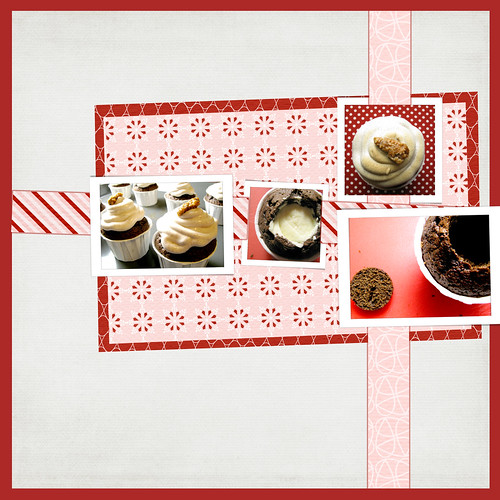
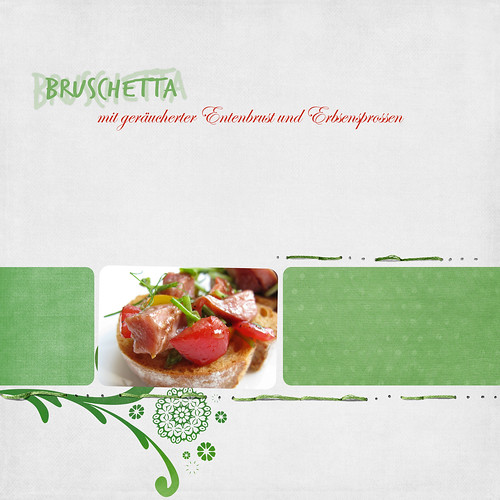
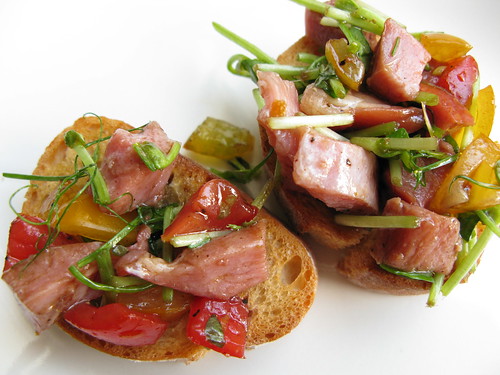
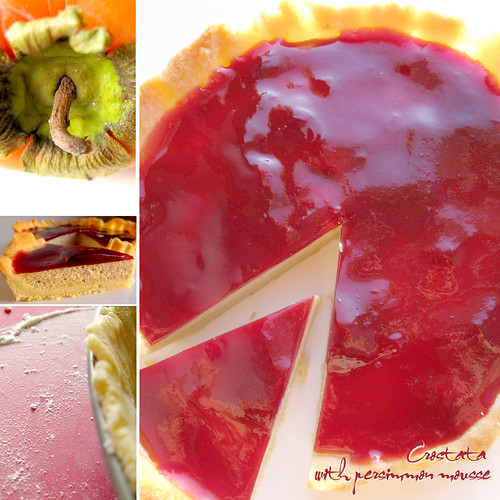

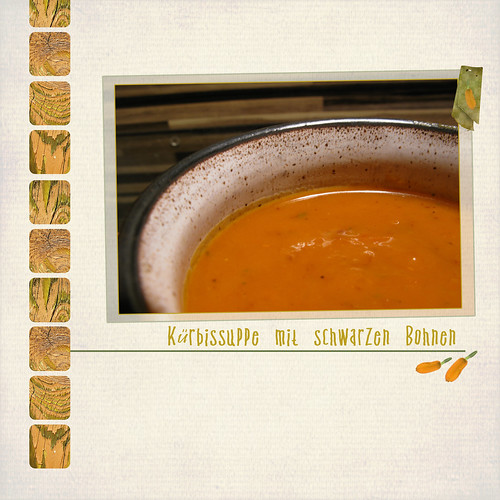



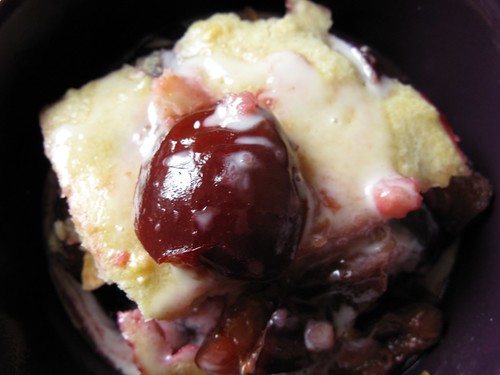






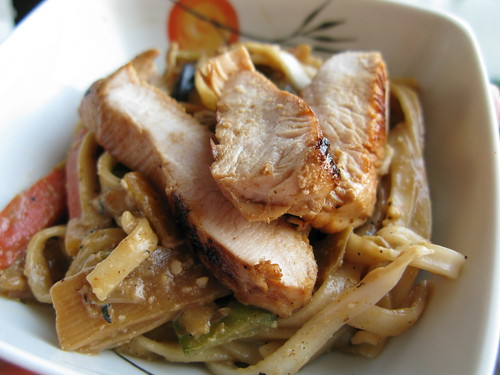


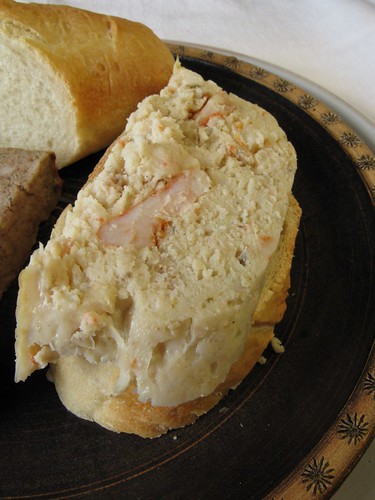
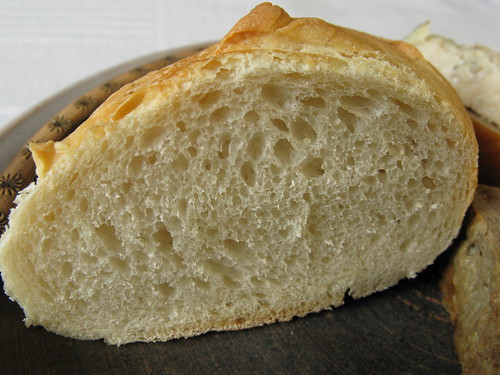
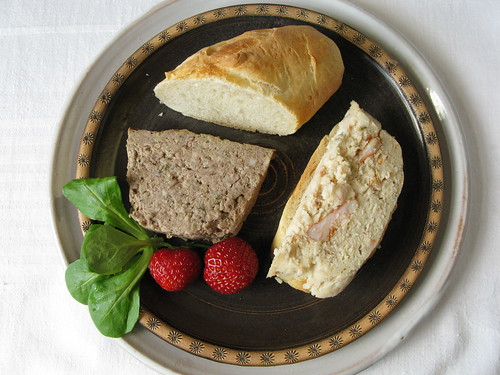
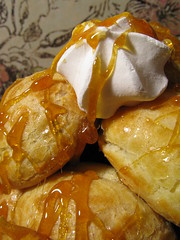 This month's challenge recipe is for a Piece Montée, which means literally "mounted piece." You may know this dessert by another name - Croquembouche ("crunch in the mouth"). The piece montée is the traditional wedding cake in France (how suitable - I have been to two weddings this month). The classic piece montée is a high pyramid/cone made of profiteroles (cream-filled puff pastries) sometimes dipped in chocolate, bound with caramel, and usually decorated with threads of caramel, sugared almonds, chocolate, flowers, or ribbons.
This month's challenge recipe is for a Piece Montée, which means literally "mounted piece." You may know this dessert by another name - Croquembouche ("crunch in the mouth"). The piece montée is the traditional wedding cake in France (how suitable - I have been to two weddings this month). The classic piece montée is a high pyramid/cone made of profiteroles (cream-filled puff pastries) sometimes dipped in chocolate, bound with caramel, and usually decorated with threads of caramel, sugared almonds, chocolate, flowers, or ribbons.







